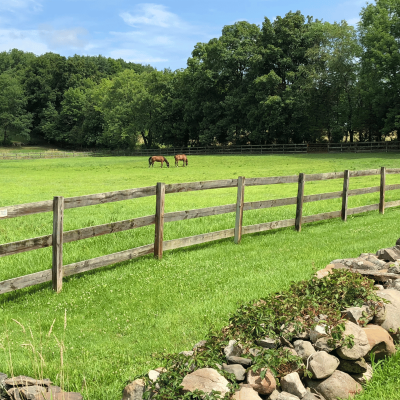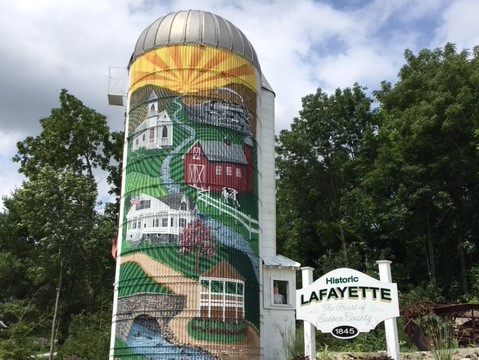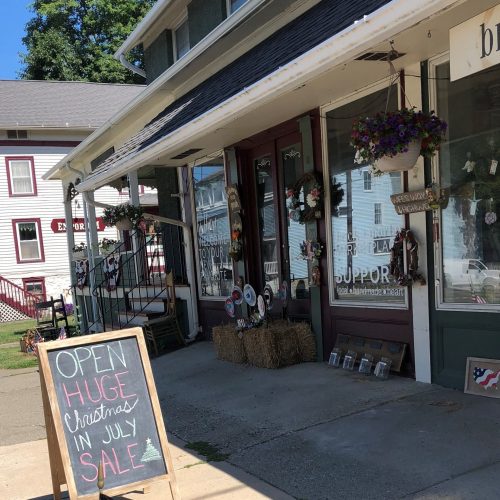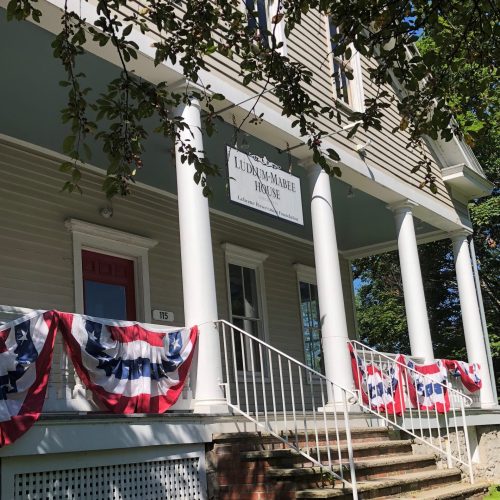Lafayette
By Lindsey Getz
Photos Courtesy of Lafayette Township
Holding the honor of being the first town in the U.S. to be named after Marquis de LaFayette, the famous Frenchman who helped win the American Revolution, Lafayette, incorporated in 1845, has maintained its rural charm even as new business and industrial evolution make its mark on the town.
“We are very careful to maintain the appeal of the old while still allowing the ‘new’ in,” said Kevin O’Leary, a longtime resident, member of the Lafayette Township Committee, Land Use Board, and Open Space Advisory Committee, and last year’s mayor. “If you drive through Lafayette, you’ll still see many active farms and a lot of open space, but we’re evolving.”
O’Leary said the town is situated in the center of Sussex County with rolling hills and ridgelines. Historic farmhouses are scattered throughout with a larger assortment of newer colonial and custombuilt homes. Ordinances, including the Ridgeline Viewshed Protection overlay zone, help maintain the town’s rural charm.
It’s the quaintness, and even farm life, drawing people to Lafayette, and with approximately 2,500 residents, it’s undoubtedly a small-town community.

“We’re seeing more young families that are interested in farming and see the value of growing their own food or raising animals, even if they’re not doing it commercially,” said O’Leary. “People are drawn to the area for that small-town feel.”
Roadside farm stands are sprinkled throughout Lafayette, offering residents and visitors fresh fruits and vegetables, local honey, as well as fresh meat and dairy products.
Lafayette has an abundance of forested and environmentally sensitive land that supports a wide variety of wildlife, such as threatened and endangered species. In fact, Lafayette is home to a 262-acre preserved great blue heron rookery, one of the most important sanctuaries on the East Coast for the nesting species.
With so much open space, there is no limit to outdoor activities. The Paulins Kill tributary runs through Lafayette and is known for its trout, providing opportunities for fishing. Lafayette also features various trailhead locations throughout the town with parking areas. The trailhead located on Warbasse Junction Road offers parking for equestrian trailers and direct access to a vast trail system developed by the state on old railroad right of ways. Lafayette provides a great environment for activities like hiking, biking, cross-country skiing, and horseback riding right in the township’s backyard.
Beyond its natural beauty, Lafayette offers plentiful shopping and dining experiences. Despite the rise of online shopping, the The Shoppes at Lafayette provide an outdoor shopping experience, featuring specialty shops, women’s boutiques, a candy shop, and a do it yourself candle shop.

Renowned for its antiquing, Lafayette is home to The Lafayette Mill Antiques Center, a downtown attraction drawing antique collectors from as far as Philadelphia and New York. The Mill and surrounding properties earned the designation of a National Historic District in 2013, with the Ludlum-Mabee House meticulously by the Lafayette Center Preservation Foundation.
“Our antique center attracts the most out-of-towners,” said Lafayette Township Land Use Administrator Stephanie Pizzulo. “Lafayette has become known as an antique destination for many collectors.”
The antique center hosts a monthly outdoor vintage flea market from April through November, attracting visitors from all over seeking unique finds. Lafayette’s proximity to New York City brings visitors from the city drawn by the town’s seasonal activities like farmer’s markets, pumpkin and apple picking, and selecting the perfect Christmas tree to cut on one of Lafayette’s tree farms.
In its early days, Lafayette was known for its taverns. Today, popular venues like Lafayette House and the Millside Café are popular destinations offering a charming, rustic atmosphere for locals and visitors.

As far as houses coming on the market, according to New Jersey Realtors® October housing market data report, Lafayette had 23 single family closed sales year-to-date, a 15% increase over last year. O’Leary acknowledges the limited inventory market across the state, this scarcity underscores the trend of residents putting down roots and staying, as O’Leary said houses are “snatched up quickly,” with single family homes staying on the market for 62 days yearto-date. Demand remains strong in the area with the single family median sales price increasing 2.9% year-to-date to $493,333 and homes receiving 102.1% of the list price.
A recently approved 132-unit apartment complex, according to Pizzulo, will provide a new housing option and attract new people to the area, while the town’s highly regarded schools draw more families to Lafayette.
“The school is very good with particularly small class sizes that you don’t often see these days,” said Pizzulo. “It’s a lot of personalized attention, since teachers can really get to know the students.”
O’Leary agrees it’s a “close-knit school,” and like other small towns, there’s a neighborly atmosphere where everyone knows one another and is willing to lend a hand.
While Lafayette has done a tremendous job of maintaining rural living, the town aims to keep up with the times. Lafayette has approved two cannabis cultivation operations, which will create jobs and tax revenue. According to Pizzulo, other industries are coming into town, contributing to more growth.

“We recently approved an application for a pharmaceutical packaging company and a 60,000 square foot warehouse for a light industrial use, which will create jobs for the area,” said Pizzulo. “We are growing.”
In a nod to keeping up with recent recreational trends, the town also recently installed its first pickleball court.
“We are evolving, but we are very committed to open space preservation to protect our abundance of environmentally sensitive land and are very mindful of that,” said O’Leary. “We are careful to remain relevant while also maintaining the quaintness that we know many people came here for in the first place.”

